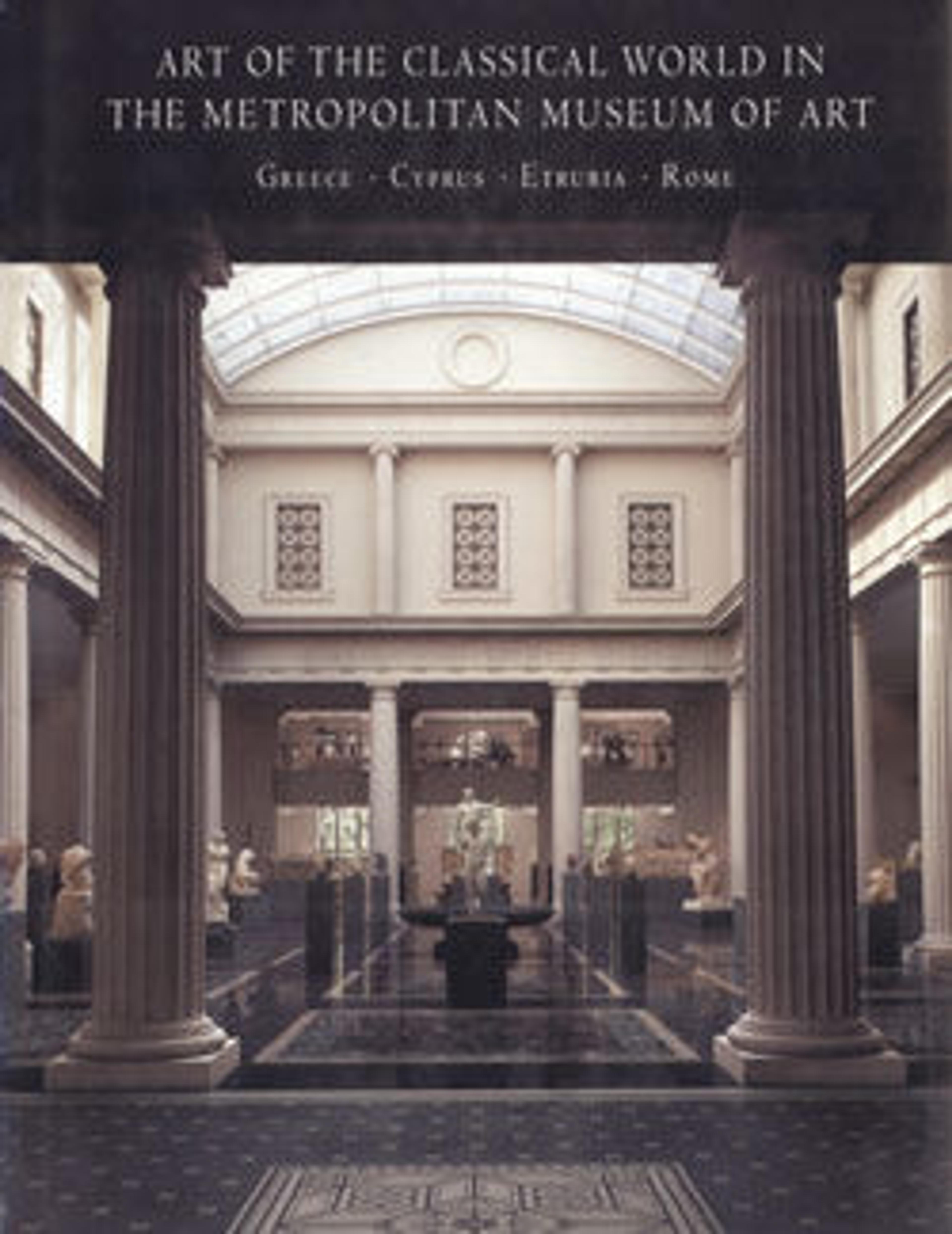Wall painting on black ground: supports with entablature, from the imperial villa at Boscotrecase
Many private summer villas were located along the coast near Naples. One of the most sumptuous must have been the villa built by Agrippa, friend of the emperor Augustus and husband of his daughter, Julia. It stood overlooking the Bay of Naples from a spot near the modern town of Boscotrecase. The villa was partially excavated between 1903 and 1905 after its accidental discovery during work on a railway. Wall decorations that still survived in four bedrooms were removed. The Metropolitan Museum acquired sections from three rooms and the Archaeological Museum at Naples received the rest.
Agrippa died in 12 B.C. and his son, Agrippa Postumus became the villa's proprietor in 11 B.C. as inscriptions found there indicate. The frescoes must have been painted during renovations begun at the time. Painted by artists working for the imperial household, they are among the finest existing examples of Roman wall painting.
The so-called Black Room was one of a sequence of bedrooms facing south toward the downward slope of the mountain and the sea. The source of light was a wide doorway giving onto a terrace or promenade.
This ambiguous and sophisticated decoration is a masterpiece of the so-called third style of Roman wall painting, which flourished during the reign of Augustus. The theme is a playful rendition of architectural motif. A low red dado serves as the base from which a skeleton of thin white columns appears to rise against a black background. There almost weightless columns support pavilions, candelabra, tripods, and a narrow cornice that runs around the room. They were embellished with jewel-like decorations. On the back wall tiny swans, the bird of Apollo, patron god of Augustus, perch improbably on threadlike spirals, and yellow panels with Egyptianizing motifs must have brought to mind the recent annexation of Egypt after the death of Cleopatra in 30 B.C. This architectural scheme creates almost no sense of depth or volume. The black walls behind appear at once to be flat and to dissolve into limitless space. Tiny landscape vignettes float like islands in the middle of this blackness. Burnished to a high polish, these walls must have appeared magical indeed when illuminated by lamps at night.
Agrippa died in 12 B.C. and his son, Agrippa Postumus became the villa's proprietor in 11 B.C. as inscriptions found there indicate. The frescoes must have been painted during renovations begun at the time. Painted by artists working for the imperial household, they are among the finest existing examples of Roman wall painting.
The so-called Black Room was one of a sequence of bedrooms facing south toward the downward slope of the mountain and the sea. The source of light was a wide doorway giving onto a terrace or promenade.
This ambiguous and sophisticated decoration is a masterpiece of the so-called third style of Roman wall painting, which flourished during the reign of Augustus. The theme is a playful rendition of architectural motif. A low red dado serves as the base from which a skeleton of thin white columns appears to rise against a black background. There almost weightless columns support pavilions, candelabra, tripods, and a narrow cornice that runs around the room. They were embellished with jewel-like decorations. On the back wall tiny swans, the bird of Apollo, patron god of Augustus, perch improbably on threadlike spirals, and yellow panels with Egyptianizing motifs must have brought to mind the recent annexation of Egypt after the death of Cleopatra in 30 B.C. This architectural scheme creates almost no sense of depth or volume. The black walls behind appear at once to be flat and to dissolve into limitless space. Tiny landscape vignettes float like islands in the middle of this blackness. Burnished to a high polish, these walls must have appeared magical indeed when illuminated by lamps at night.
Artwork Details
- Title: Wall painting on black ground: supports with entablature, from the imperial villa at Boscotrecase
- Period: Early Imperial
- Date: last decade of the 1st century BCE
- Culture: Roman, Pompeian
- Medium: Fresco
- Dimensions: Overall: 72 1/4 x 18 1/2in. (183.5 x 47cm)
- Classification: Miscellaneous-Paintings
- Credit Line: Rogers Fund, 1920
- Object Number: 20.192.6
- Curatorial Department: Greek and Roman Art
More Artwork
Research Resources
The Met provides unparalleled resources for research and welcomes an international community of students and scholars. The Met's Open Access API is where creators and researchers can connect to the The Met collection. Open Access data and public domain images are available for unrestricted commercial and noncommercial use without permission or fee.
To request images under copyright and other restrictions, please use this Image Request form.
Feedback
We continue to research and examine historical and cultural context for objects in The Met collection. If you have comments or questions about this object record, please complete and submit this form. The Museum looks forward to receiving your comments.
